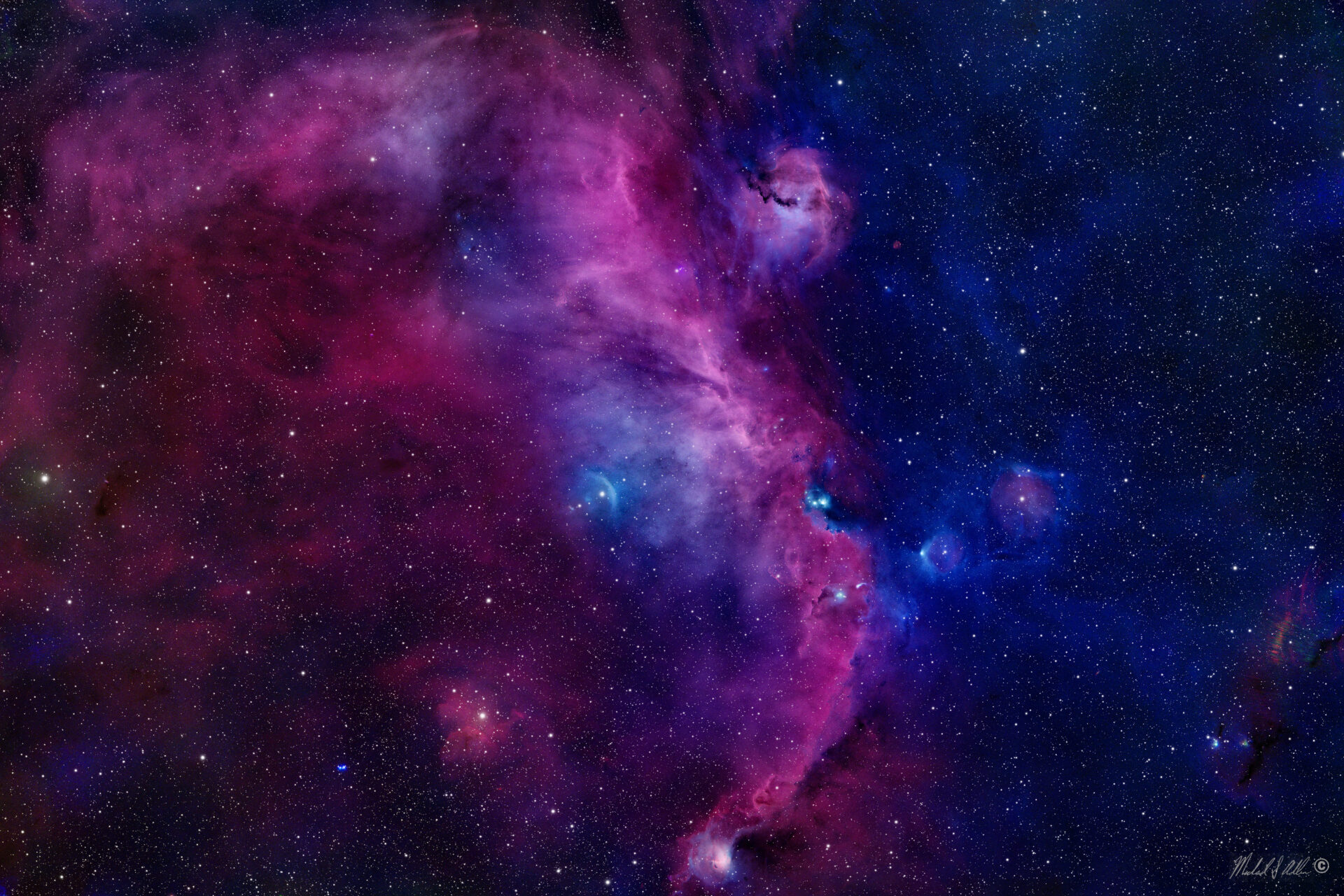Optics: Takahashi 106mm
Mount: Software Bisque Paramount MX
Camera: Ascom Camera
Filters: Ha 3nm, FLI RGB
Dates/Times: December 2023
Location: Heavens Mirror II, Australia
Exposure Details: Ha=14x15min , RGB=17x10min, total 65 images, 12 hr
Acquisition & Guiding: CCD Stack
Processing: MaximDL stacking,BlurX & StarX Terminator, Photoshop CC2024 Ha&R,G,B assembly and final processing
IC 2177, Seagull Nebula
Original price was: $65.00.$52.50Current price is: $52.50.
IC 2177, Seagull Nebula
The Seagull Nebula (IC 2177) is a large region of nebulosity located approximately 3,650 light-years away in the constellation Monoceros (the Unicorn), on the border with Canis Major and the brightest star in the sky, Sirius. The nebula includes an Hydrogen gas emission region, open star clusters, dark dust clouds, and reflection nebulae. It was named the Seagull because its complex of dust and gas forms a shape reminiscent of that of a seagull in flight. The nebula is composed of interstellar dust clouds and hydrogen, helium, and other gases that are ionized by the energetic young stars formed within the nebula. The radiation of the new stars causes the surrounding hydrogen gas to glow with a reddish color in long-exposure images. The blue color is caused by reflected star light on gas and dust clouds. This is a true color RGB image with the addition of red narrowband emissions from Hydrogen gas. Likely part of a larger area swept up by successive supernova explosions, the broad Seagull Nebula is the size of seven full moons. The prominent bluish arc below and right of center is a bow shock from runaway star Canis Marjoris. This complex of gas and dust clouds spans over 200 light-years at the Seagull Nebula’s estimated 3,800 light-year distance. The image was taken in Australia with a 4″ Takahashi refractor telescope.


